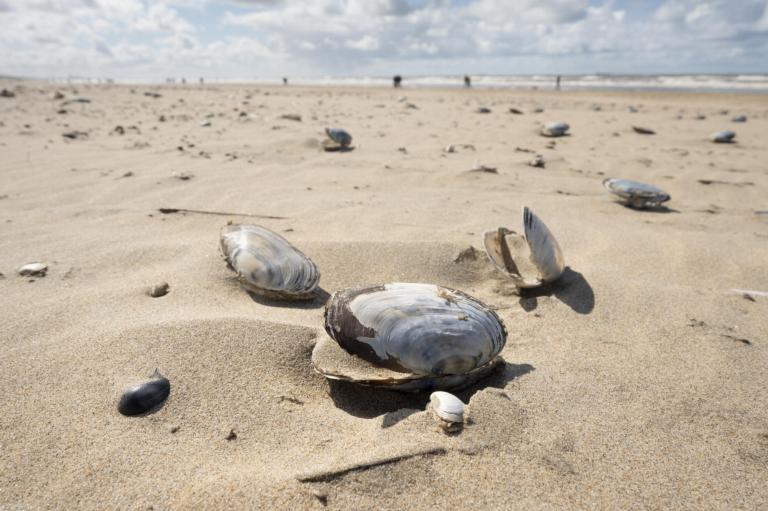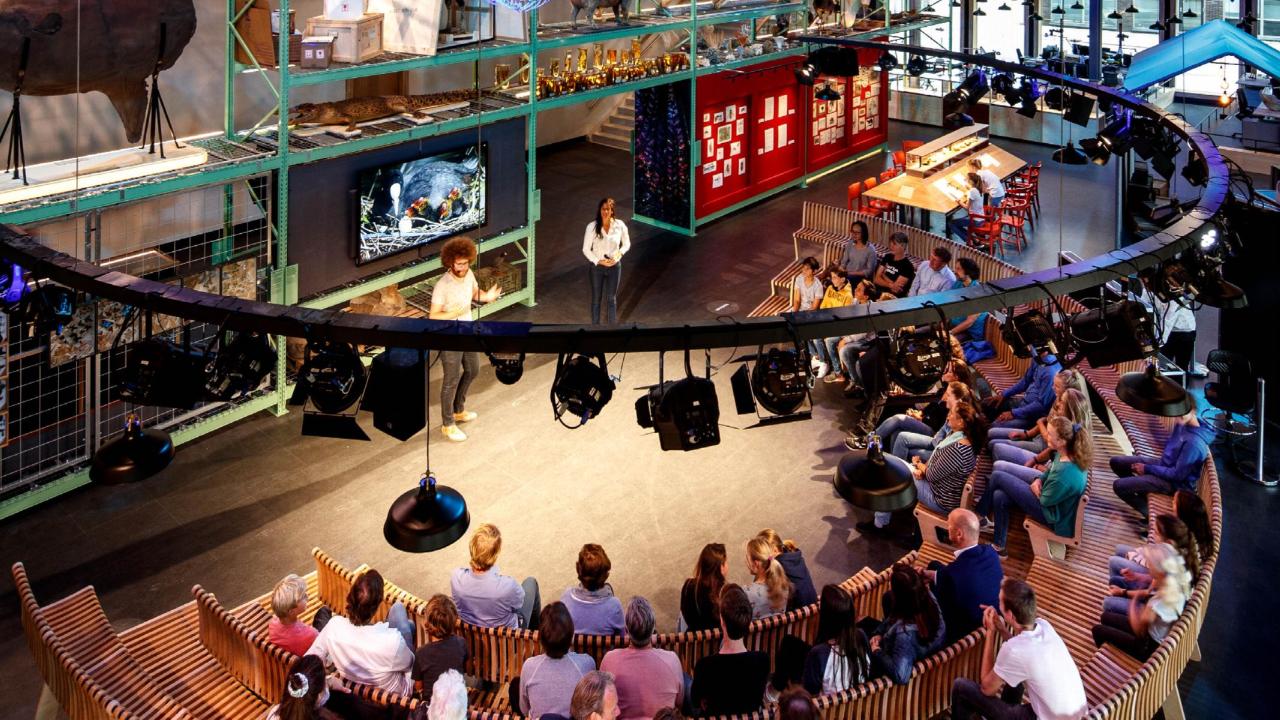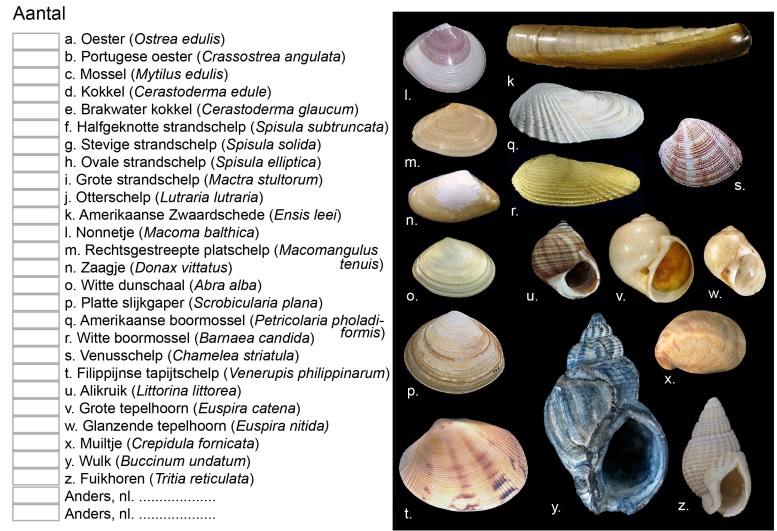
On March 23, several Dutch nature organizations held a shell count on eight beaches in the Netherlands. Hundreds of people, including many families, counted a total of over 34,000 shells.
For scienceand fun
In Belgium, the marine research institute VLIZ has been organizing a national shell count for five years, and now it's going international. Naturalis, the Strandwerkgemeenschap, the Dutch malacological society, Stichting De Noordzee and Stichting Anemoon visited a number of Dutch beaches to help beachgoers, families and citizen scientists count shells. Looking properly at what's on the beach will make every visit there better, and the data will benefit science. Die hard shell fans can find the dataset here (Dutch and Latin names only).
Let's count:how to do it
Because we want to compare the Dutch shell data to the Belgian shell data, we're going to count them in the same way. This video explains how: you go to the shoreline - the border of wet and dry - and place a marker. Then, spiraling out from your marker, you collect 100 shells (but not broken ones). You sort them by species, using the guides we'll provide or with the help of our experts. Then you note how many of each species you have. Easy!
Whereto count
You can find the shell counting locations on Schelpenteldag.nl (In Dutch only, for now). The people at the Schelpdesks all speak English well enough to help you out.
In themuseum
During the day, we had a live program in our museum hall LiveScience, with short lectures, activities and updates. Here we also had the "Schelpdesk", where our experts will help determine the more difficult species. That is both those found on the beaches and those brought by museum visitors: if they had got a shell at home and wanted to know what it's called, they bring it to Naturalis on March 19.


FrequentlyAsked questions
A .PDF? Just use an app, man.
Plans for an app are underway. If all goes well, we'll start building an app this summer.
What'll happen to the data?
We'll share it with our Belgian friends of the VLIZ. Data about the shells will be public, and we hope to share the first results on the Tuesday after the count.
What do I do with the shells?
You can leave them on the beach, but taking your favorites home is allowed, of course. If you post a picture or movie of yourself with your shells and post it on your favorite social medium with the hashtag #Shellfie, you have a change of winning a goodiebag with cool stuff from the organizations.
Moreinformation
Most information on Dutch marine life is, sadly, available in Dutch only. English versions are a work in progress. Our volunteers in the museum and on the six beaches all speak English (and most of them speak German, too), and will be more than happy to help you.
